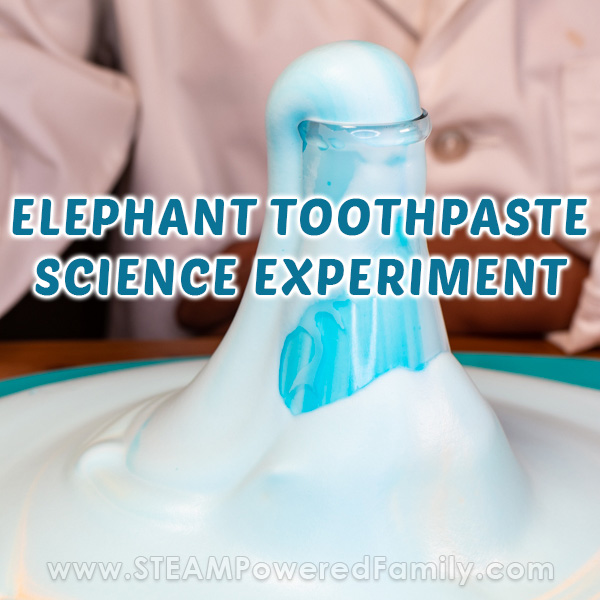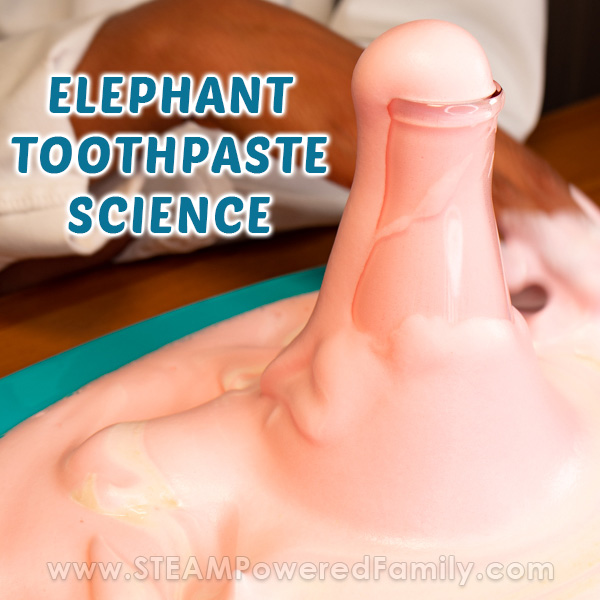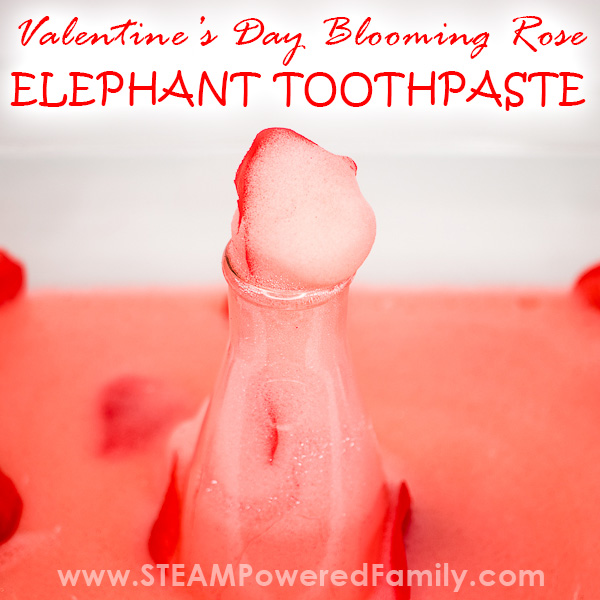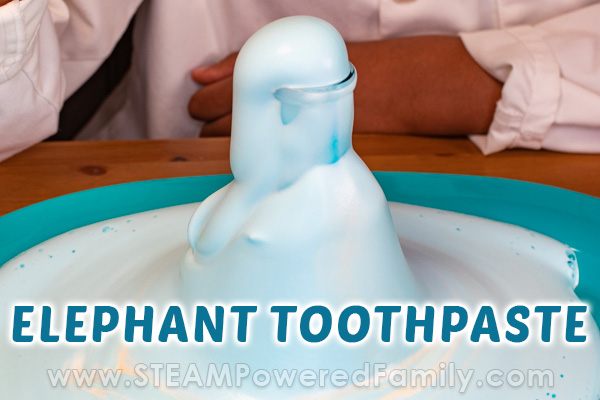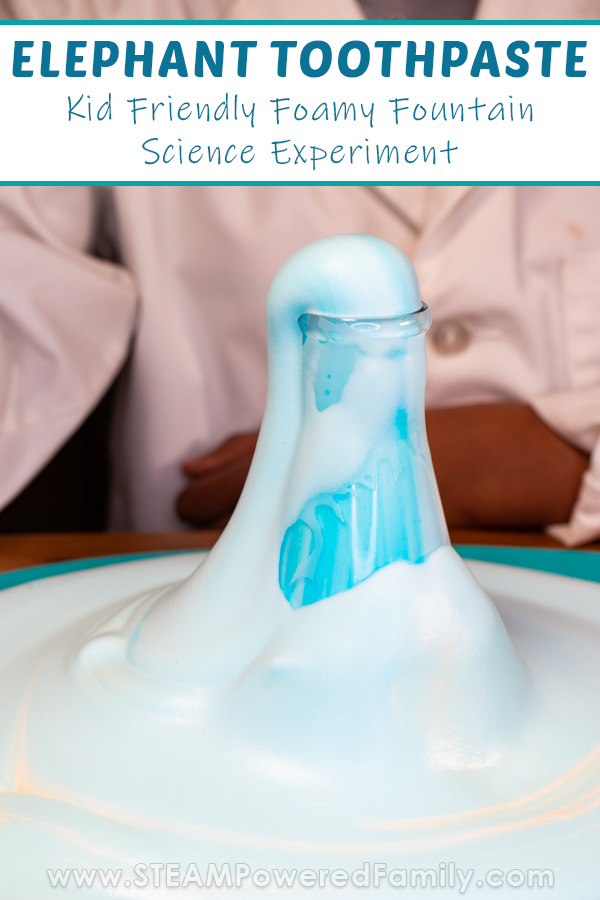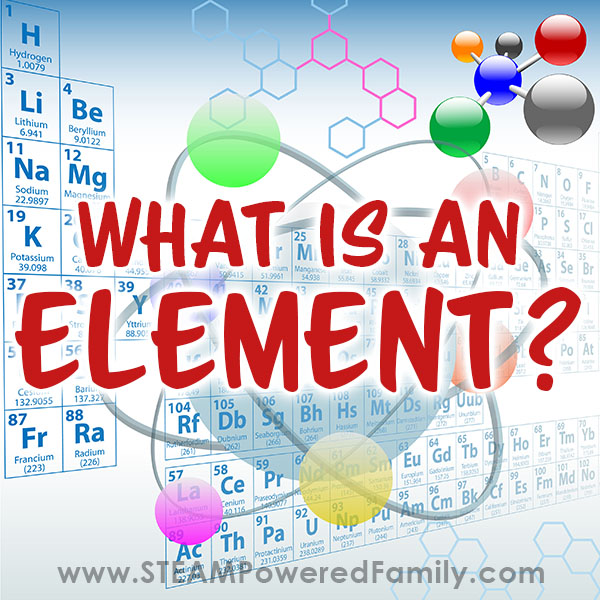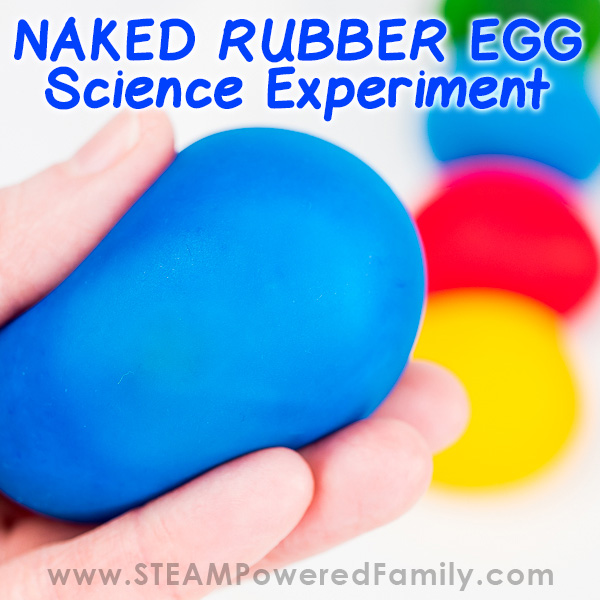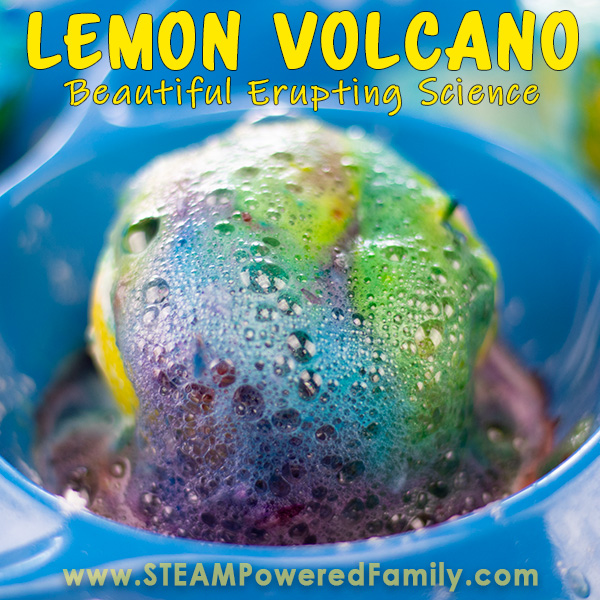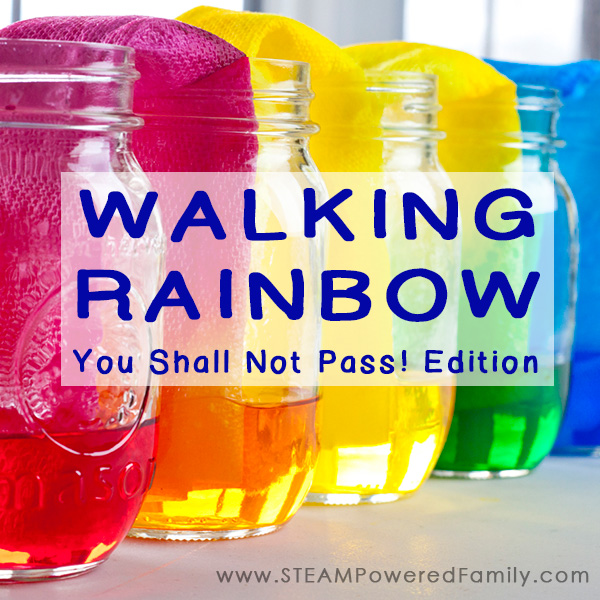Elephant Toothpaste
Create a giant, foaming reaction that will astound kids with this Elephant Toothpaste Science Experiment. This simple science experiment is a another erupting science that thrills kids of all ages. Students will learn about chemical reactions that are exothermic. Go beyond baking soda and vinegar reactions and try Elephant Toothpaste.
How To Make Elephant Toothpaste
Disclaimer: This article may contain commission or affiliate links. As an Amazon Influencer I earn from qualifying purchases.
Not seeing our videos? Turn off any adblockers to ensure our video feed can be seen. Or visit our YouTube channel to see if the video has been uploaded there. We are slowly uploading our archives. Thanks!
This classic science experiment has been wowing kids for generations. At the science centre or on TV you have probably seen spectacular elephant toothpaste experiments that shoot up feet into the air. Here we provide you with a simple version of Elephant Toothpaste using items from your home.
Check out our video set to music demonstrating Elephant Toothpaste in action!
Watch this fun experiment in action. If you can’t see the video, please turn off your adblockers as they also block our video feed. You can also find this video on the STEAM Powered Family YouTube Channel.
What is Elephant Toothpaste?
Elephant toothpaste is a safe, fantastic foamy science experiment using Hydrogen Peroxide and Yeast. When done in a beaker or bottle that narrows at the top, it oozes out like a great big tube of toothpaste. Perfectly sized for an elephant!
Depending on where you are in the world, Elephant’s Toothpaste has also been called Devil’s Toothpaste, Demon’s Toothpaste
It packs huge wow factor with the kids. It also provides a sensory experience while teaching kids important scientific principles such as:
Chemistry
Catalyst
Surface tension
Exothermic reaction
Temperature
Liquid/Gas (states of matter)
Mixture
Is Elephant Toothpaste Safe?
Elephant Toothpaste is safe when using 3% hydrogen peroxide! The foam is composed of soap, oxygen and water. It makes a great sensory science experience.
NOTE: Although we call this toothpaste, it is not toothpaste and should not be tasted. Ensure appropriate supervision is provided at all times.
Elephant Toothpaste Ingredients
250mL Glass Erlenmeyer Flask or an empty plastic bottle
Dry yeast
Warm water
Liquid dish soap
3% hydrogen peroxide*
Liquid food colouring
Measuring cups
Measuring spoons
Safety goggles or glasses
Large tub or tray (something with a lip)
Funnel (optional – can help kids with pouring)
Infrared non-contact thermometer (optional, helps with measuring the exothermic reaction)
*Higher percentage concentration hydrogen peroxide are dangerous and can cause skin irritation. Ensure you are using 3% with your kids in this experiment.
Elephant Toothpaste Experiment
Pick a place to do this experiment that is easy to clean up. If you do this in a nice big, high lipped tray that should contain most of foam, but in my experience kids love to play and touch the foam, so things can get messy quickly. Have your child put on safety glasses and clothes they don’t mind splashing.
Start by mixing one packet (about 1 tablespoon) of yeast with 1/4 cup warm water in cup to create the first mixture. Let it sit for about 30 seconds while you prep the beaker.
Into the flask add 150 mL of Hydrogen Peroxide, a tablespoon of dish soap (after a few tries we just used a squirt of dish soap, it doesn’t need to be exact), and about 15 drops of food coloring (if desired).
If you are taking temperatures, take a temperature of each of the liquids now.
Now pour the yeast mixture into the hydrogen peroxide solution.
Watch the reaction!
If you are doing temperatures, make sure you take a temperature read during the reaction too!
Elephant Toothpaste Science
The main reactor in this experiment is 3% Hydrogen Peroxide a liquid made from hydrogen atoms and oxygen atoms (chemical formula H2O2), which is used in first aid as an antiseptic. Normally it comes in a dark bottle because H2O2 or hydrogen peroxide breaks down in light, turning into oxygen (O2) and water (H2O). Normally this reaction happens very slowly, but we can speed it up with a little science!
Yeast, which we use to make bread, is an organism that contains a special chemical called catalase that can act as a catalyst to help break down hydrogen peroxide. This means that if you mix yeast with hydrogen peroxide, the hydrogen peroxide will rapidly break down into liquid water and oxygen gas. During this process energy is also released in the form of heat, which is known as an exothermic reaction.
Elephant Toothpaste Chemical Formula
Here is the chemical reaction for Elephant Toothpaste: 2 H2O2 (aq) → 2 H2O (l) + O2 (g)
Those gas bubbles would normally pop and disappear, but by adding a bit of dish soap, we can trap lots of bubbles thanks to an increase in surface tension. We explore this scientific concept in our Magic Milk experiment. This means the foam is simply soap, oxygen and water. Perfectly safe to touch and explore!
The result is a spectacular eruption of foam known as Elephant Toothpaste.
Elephant Toothpaste Extension Activities
There are a few things you can do to dig deeper into this reaction:
- Use an infrared no touch thermometer to measure the exothermic reaction.
- Why stop at a single color? Make multi-colored Elephant’s Toothpaste by dropping different colors of liquid food coloring down the inside of the bottle rather than mixing it into the solution. The result will be colored foam stripes.
- Try different shaped containers to see how the reaction changes. Maybe a plastic soda bottle or a mason jar with a wider neck. How does the experiment results change?
- Alter the ratio of yeast to hydrogen peroxide. What if you increase to one cup of hydrogen peroxide? What effect does it have on the reaction?
- What happens if you remove the dish soap?
- Visit your local science center and ask when they will be doing their next Elephant Toothpaste demonstration. They use a different reaction that produces spectacular results with lots of foam!
- Only do this next extension with responsible middle or high school students, and under direct adult supervision – Visit the hair supply store and get 6% or higher hydrogen peroxide. How does the higher concentration hydrogen peroxide change the results? (Hint… bigger and messier!)
Don’t forget to try our Valentine’s Day Science Experiment Blooming Roses Elephant Toothpaste!
How To Clean Up Elephant Toothpaste
Once you are done with the experiment and playing with the foam, you can wash everything up in the sink. In fact, it cleans up easily thanks to the soap.
Sensory Experience
While doing this experiment ensure you discuss the sensory inputs provided by this fantastic foaming science.
First they will experience the sense of smell from the yeast. Have the kids discuss this smell and what it reminds them of.
Next we have the sensory experience of touch. This is done in two ways. Have them touch the sides of the beaker before and after the experiment starts. This way they can experience the exothermic reaction (the beaker will feel warm, but as long as you are using 3% hydrogen peroxide, it is not hot). You can reinforce this exploration by using a non-contact thermometer. The second touch experience is with the foam. The foam is perfectly safe to touch. As we explored in the science portion, the foam is just soap, water and oxygen.
Elephant toothpaste is a fantastic sensory science experience.
Elephant Toothpaste Classic Science
Creating Elephant Toothpaste is a quick and easy science experiment that can be easily adjusted to suit the learning needs of upper elementary through middle school. It has great WOW factor, and kids around the world have loved creating these foamy fountains we affectionately call, Elephant Toothpaste.
Enjoy this classic science experiment!


